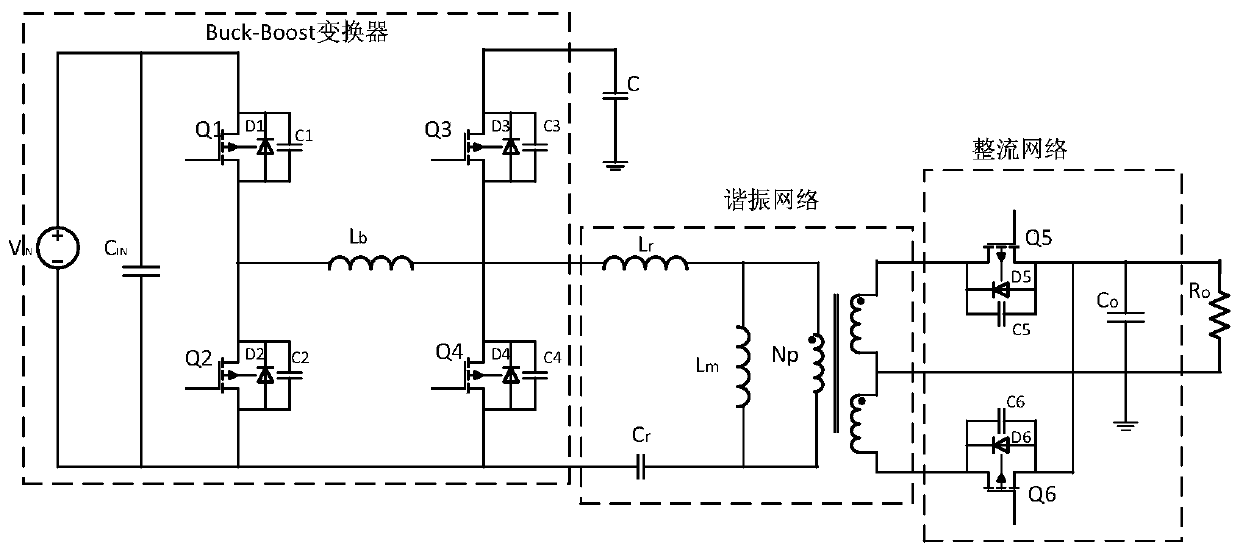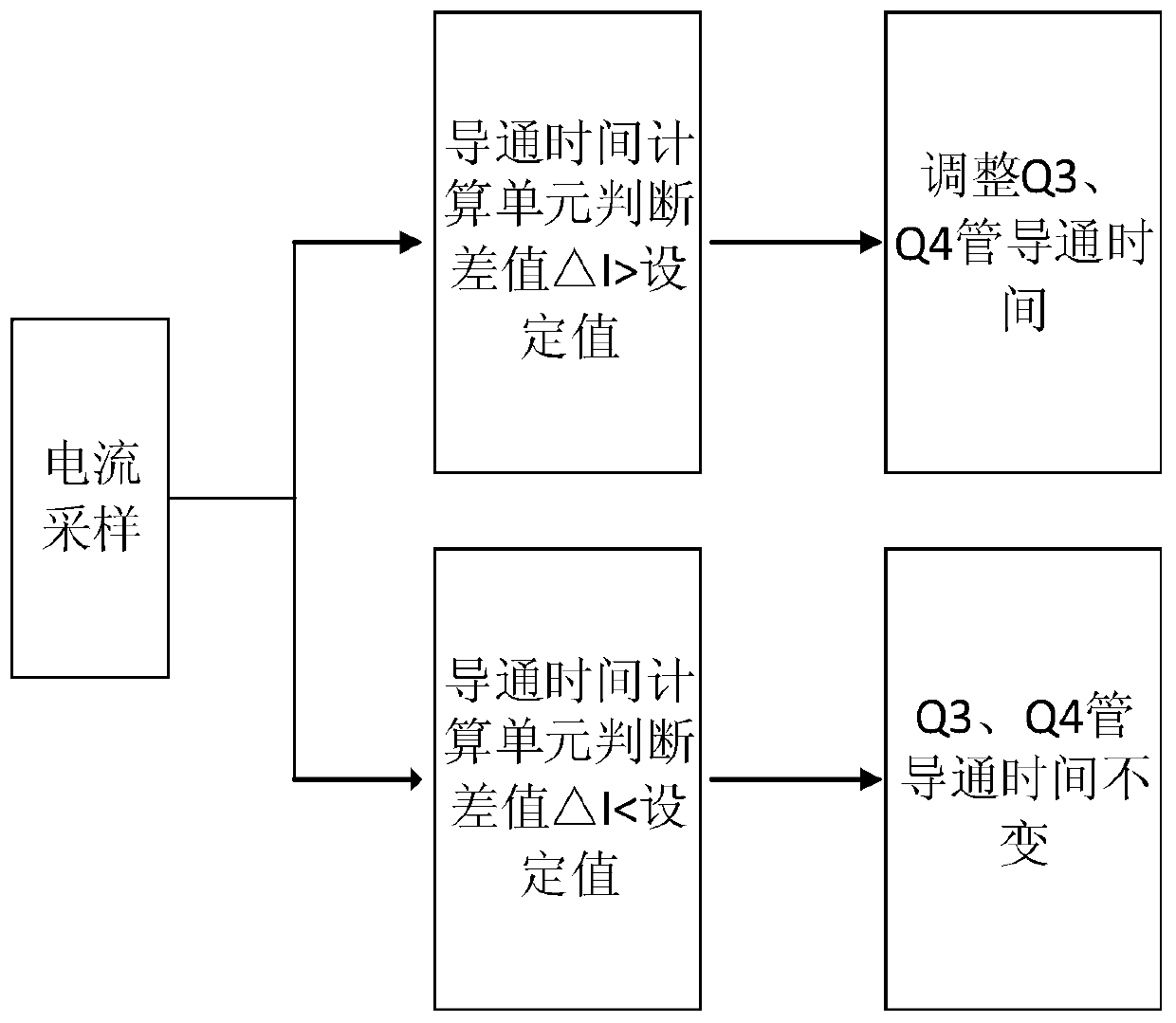Control system and control method for asymmetric secondary side current of buck-boost resonant converter
A resonant converter, secondary current technology, applied in the control/regulation system, the irreversible DC power input is converted into AC power output, the AC power input is converted into DC power output, etc. It can solve the problems of long and increase loss, so as to achieve the effect of easy control method, average heat generation, and reduction of heat loss
- Summary
- Abstract
- Description
- Claims
- Application Information
AI Technical Summary
Problems solved by technology
Method used
Image
Examples
Embodiment 1
[0039] Example 1. The schematic circuit diagram of the control system for the secondary side current asymmetry of the buck-boost resonant converter proposed by the present invention is as follows: figure 2 shown.
[0040] The control system for the asymmetry of the secondary side current of the buck-boost resonant converter includes: a first current sampling circuit, a second current sampling circuit, a control circuit with an MCU as the core, and an isolation drive circuit.
[0041] The first current sampling circuit includes: a first sampling chip and a first sampling resistor Rs1. The first sampling resistor Rs1 is connected in series between the first secondary winding of the transformer Tr and the first synchronous rectifier tube Q5, the two ends of the first sampling resistor Rs1 are respectively connected to the two input terminals of the first sampling chip, and the The output terminal is connected to the control circuit with MCU as the core.
[0042] The second cu...
Embodiment 2
[0054] Example 2. The system block diagram of the control method for the secondary side current asymmetry of the buck-boost resonant converter proposed by the present invention is as follows image 3 shown. Wherein the third pre-stage power tube Q3 and the fourth pre-stage power tube Q4 are complementary conduction, therefore, reducing the conduction time of the third pre-stage power tube Q3 will correspondingly increase the conduction time of the fourth pre-stage power tube Q4, Increasing the conduction time of the third pre-stage power transistor Q3 correspondingly reduces the conduction time of the fourth pre-stage power transistor Q4.
[0055] When the buck-boost resonant converter is in a stable working state, when the resonant current on the primary winding side of the transformer is distorted, the current flowing in the rectification network on the secondary winding side will be asymmetrical in the first half cycle and the second half cycle . Therefore, the current p...
Embodiment 3
[0066] Example 3. Figure 4 In the case of primary side current distortion, when the control method proposed by the present invention is not used, the schematic diagrams of the transformer secondary rectifier tube current in the first half cycle and the second half cycle, the solid line in the figure represents the current of the first rectifier tube Q5, and the dotted line represents the current of the first rectifier tube Q5. The current of the second rectifier tube Q6. Figure 5 In the case of primary side current distortion, when using the control method proposed by the present invention, the transformer secondary rectifier tube current schematic diagram of the first half cycle and the second half cycle, the solid line in the figure represents the current of the first rectifier tube Q5, and the dotted line represents the second rectifier tube Q5. The current of the rectifier tube Q6.
[0067] Comparing the two figures, it is obvious that under the condition of primary cur...
PUM
 Login to View More
Login to View More Abstract
Description
Claims
Application Information
 Login to View More
Login to View More - R&D
- Intellectual Property
- Life Sciences
- Materials
- Tech Scout
- Unparalleled Data Quality
- Higher Quality Content
- 60% Fewer Hallucinations
Browse by: Latest US Patents, China's latest patents, Technical Efficacy Thesaurus, Application Domain, Technology Topic, Popular Technical Reports.
© 2025 PatSnap. All rights reserved.Legal|Privacy policy|Modern Slavery Act Transparency Statement|Sitemap|About US| Contact US: help@patsnap.com



